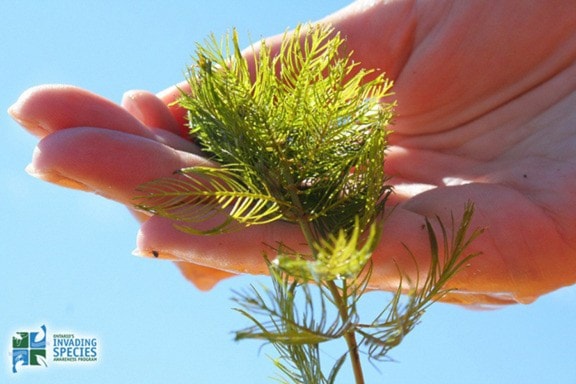Invasive Eurasian water milfoil has been confirmed in Shawnigan Lake.
Kelly Musselwhite, executive director of the Shawnigan Basin Society, said in a newsletter that the problem was identified in September after a resident indicated there was a milfoil problem around her lakeside property.
She said after an intensive study of the lake, it was determined that up to 80 per cent of the lake is covered in the invasive aquatic plant species Eurasian water milfoil.
It has also been determined that Shawnigan Lake has parrot feather milfoil and a hybrid combination of the two related species.
The problem of parrot feather milfoil in Somenos Creek has seen the Municipality of North Cowichan decide to earmark at least $100,000 over the next few years to have it removed.
Eurasian milfoil is native to Europe, Asia and North Africa and was introduced to North America in the 19th century.
It is now one of the most widely distributed invasive aquatic plants on the continent.
Eurasian milfoil forms dense underwater mats that shade other aquatic plants and when large stands begin to die off in the fall, the decaying plants can reduce oxygen levels in the water.
Musselwhite said the Eurasian milfoil must be collaboratively and annually managed if the community is to prevent its uncontrolled growth.
She said the issue of Eurasian milfoil in Shawnigan Lake is daunting for many reasons.
Musselwhite said one of primary concerns is that the flowering season of the plant is late July and early August when recreational boating activity is at its peak.
"To have the plant fragmented by boaters' propellers in waters up to 20 feet while the plant is also fruiting would be vastly detrimental to Shawnigan, especially if management opportunities are not annually conducted," she said.
"Further, once the plant has been identified as present, it cannot be eradicated. Examples of methods of control can be witnessed in Okanagan and Christina Lakes and are enormously important to share with Shawnigan Lake community members. Management is the only option, yet this would require the collaboration and alliances of foreshore residents and lake users."
Musselwhite said the Shawnigan Basin Society is planning a spring community workshop on the issue and is currently seeking grant funding to support a community-wide initiative.
"By hosting an educational workshop, conducting a milfoil identification and charting exercise, and guiding residents through the necessary manual removal effort of the plant, we aim to encourage residents to collaboratively and annually manage milfoil to prevent its uncontrolled and detrimental growth," she said.
